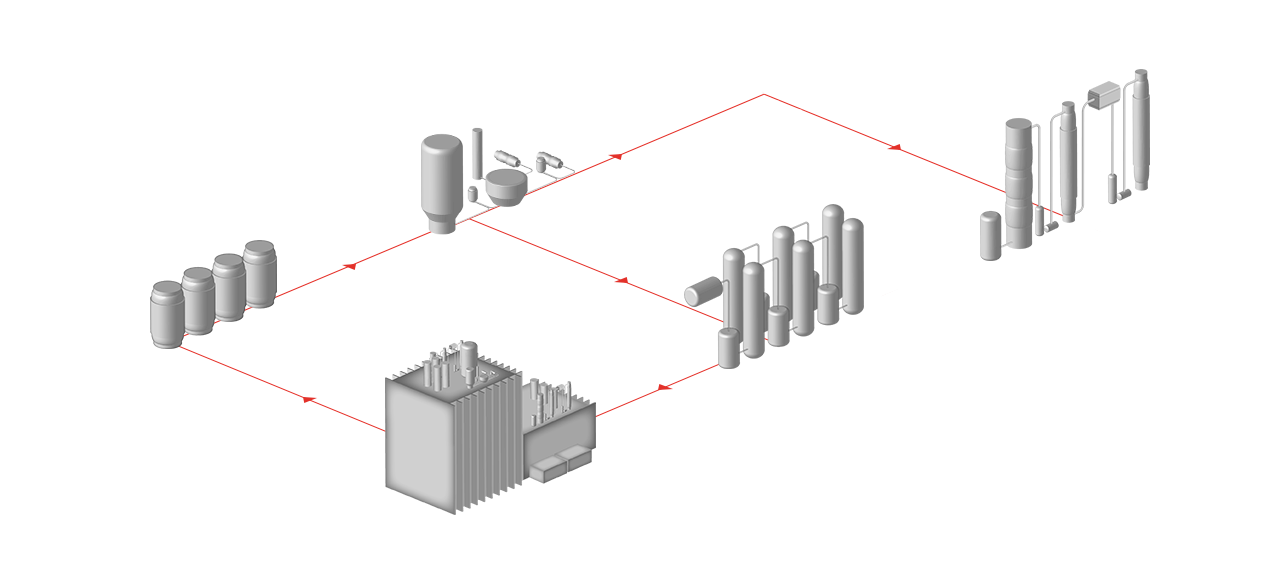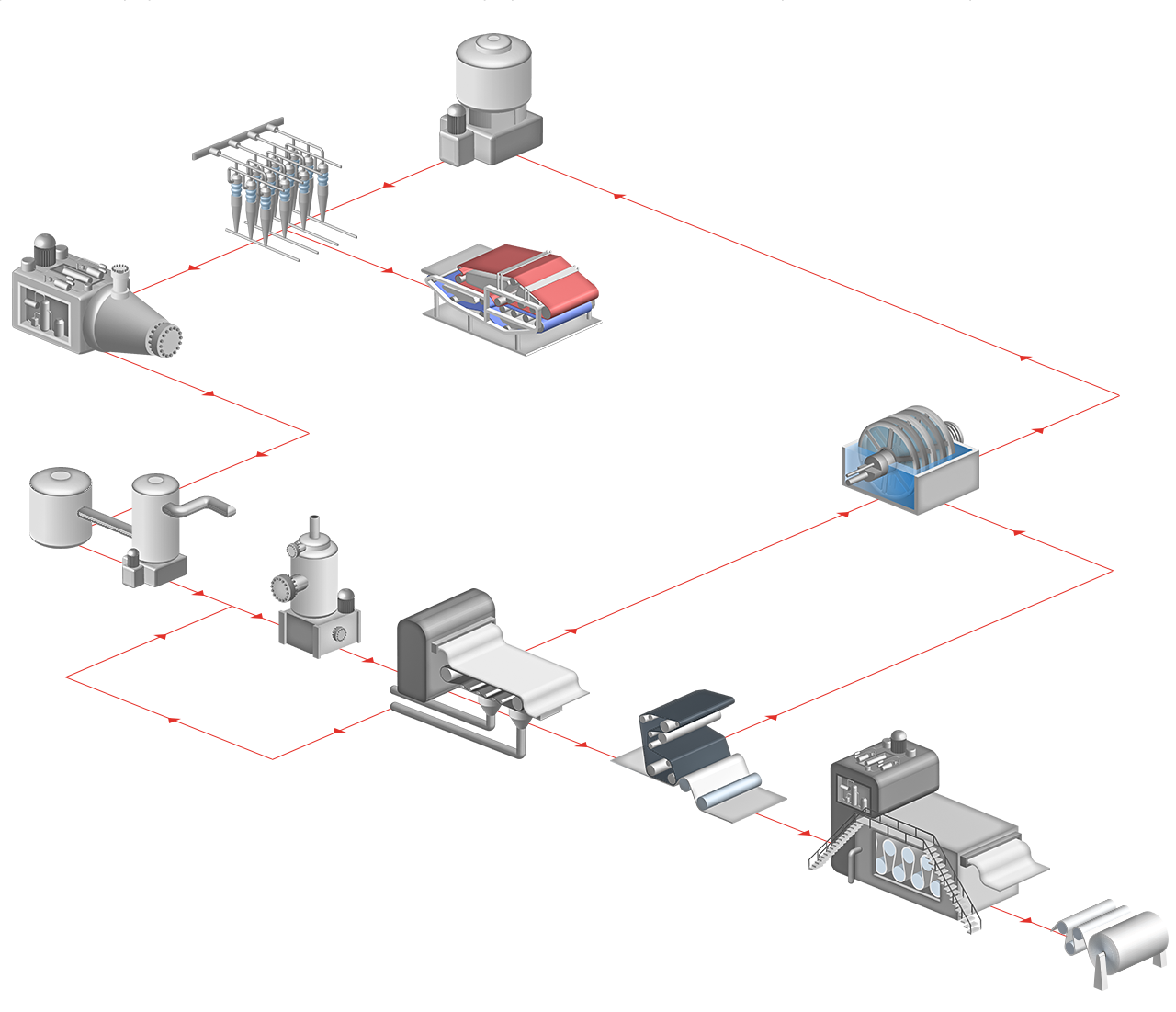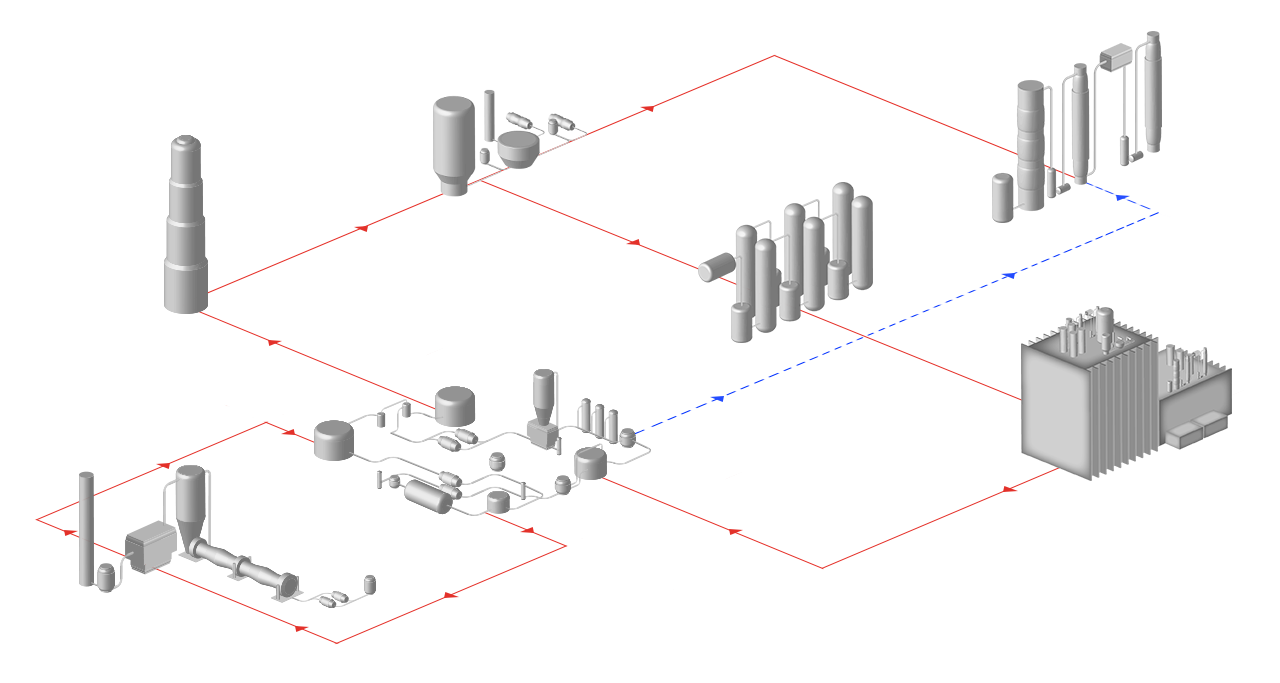All customerprocesses that use gases - Strategic application technology
Nested Applications
Nested Applications
Categories Navigation
Asset Publisher
Sulphite process paper
The sulphite process is an industrial process to produce wood pulp suitable for wood low in resin and silicic acid.The advantages of this process are above all the very efficient delignification, the good bleachability, the high reactivity during further processing and low investment costs. In the sulphite process, the wood fibres are digested in an acidic or neutral medium. In the process, the lignin is subjected to sulphonation and is thereby converted into a water-soluble salt which can be removed from the cellulose. The by-product lignosulphonates are either commercially recovered or incinerated (recovery). In case of recovery the black liquor separated from the fibres during pulp washing is evaporated and burned in the recovery boiler using oxygen. The very light pulps produced in this way are today used almost exclusively for the production of chemical cellulose or paper. To produce one tonne of pulp you need about five cubic metres of wood and 90 kilograms of sulphur.
Paper production
On the paper machine, paper is produced out of processed plant fibers (mechanical, chemical pulp, recycled fibers). At first fibers are distributed in water, pre-treated, mixed with other raw materials and - after further dilution and making the water/fiber mixture as uniform as possibly - introduced to the headbox. From there, this suspension is brought to the wire where sheet forming and the first step of dewatering takes place. Further dewatering steps are carried out in the press section and the drying section. In the water circuit of the paper machine the major amount of water used for paper making is recovered.
Sulphate process paper
The sulphate process (also known as "Kraft digestion" because of the strength of the paper made using it) is the most common process for making paper pulp from cellulose. Lignin contained in the plant material is separated by cooking in an alkaline medium containing sodium sulphate and sodium hydroxide ("white liquor"). The pulp is screened, washed and bleached. By clever combination of process steps, the chemicals used can be largely recovered, with gases increasingly being used here.



